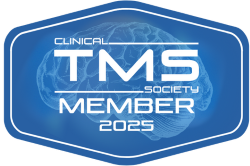
Over the past twenty years, treatment for patients with mental health diagnoses has changed dramatically, including the development of brain stimulation therapy (BST) for various mental health diagnoses. Methods of psychotherapy, such as dialectical behavior therapy (DBT) and cognitive behavioral therapy (CBT), have evolved to incorporate techniques like mindfulness and meditation, which help patients develop robust strategies to manage stress and the symptoms of mental health diagnoses such as anxiety, depression, and borderline personality disorder (BPD). Another new development is in the area of brain stimulation techniques, which we mention above. Evidence shows brain stimulation can reduce suicide risk and alleviate symptoms of depression in patients diagnosed with treatment-resistant depression (TRD).
There are several types of brain stimulation currently either in use or in the clinical trial phase in mental health treatment. The National Institute of Mental Health (NIMH) calls these techniques brain stimulation therapies (BSTs) and identifies the following five in their literature.
BSTs approved by the Food and Drug Administration (FDA):
- Electroconvulsive therapy (ECT)
- Repetitive transcranial magnetic stimulation (rTMS)
- Vagus nerve stimulation (VNS)
BSTs in the clinical trial/experimental phase:
- Magnetic seizure therapy (MST)
- Deep brain stimulation (DBS)
What these treatments have in common is that they use electrical or electromagnetic pulses, delivered directly to specific areas of the brain, to reduce the symptoms of mental health diagnoses. Where they differ is in their procedures. Of the five treatments we list above, four require anesthesia – ECT, VNS, MST, and DBS – to administer treatment, and two require surgery – VNS and DBS – to administer treatment.
All of these treatments are designed for people with severe or treatment-resistant mental health disganoses. Among these treatments, the least invasive is rTMS, known commonly as TMS. TMS does not require anesthesia and offers rapid and long-lasting symptom relief. We’ll discuss the difference between TMS and ECT in another article. In the meantime, to learn more about TMS, please read our page here:
Transcranial Magnetic Stimulation
Evidence shows TMS is an effective approach for treatment-resistant depression, depression with suicidal ideation, anxious depression, obsessive-compulsive disorder (OCD), anxiety diagnoses, post-traumatic stress disorder (PTSD), and smoking cessation. In comparison to the other brain stimulation techniques, TMS has the fewest side effects and the least complex treatment protocols.
This article addresses new data on a brain stimulation therapy currently in clinical trials for mental health treatment, with a focus its potential for reducing suicidality in patients with borderline personality disorder and comorbid treatment-resistant depression: magnetic seizure therapy (MST).
Magnetic Seizure Therapy (MST), Borderline Personality Disorder (BDP), Suicidality, and Treatment-Resistant Depression
We should clear one thing up right away: though the technology for MST is similar to TMS, MST is not simply an amplified or variation of TMS. Dr. Shawn McClintock of the University of Texas, interviewed in Psychiatric Times, describes the fundamental difference between MST and TMS:
“MST requires a different device and uses different frequencies than TMS, so it is essentially a brand-new therapy and not a modified form of TMS. Seizure therapy is also an intensive treatment, so you want to proceed with the highest rigor, especially when it comes to safety, even if it takes more time.”
That quote also reveals another difference between MST and TMS: whereas the gentle pulses of TMS stimulate brain areas, MST induces small, temporary seizures to achieve its therapeutic effect. Hence the difference in names: magnetic seizure therapy as opposed to transcranial magnetic stimulation.
While it may take time for this treatment to reach mainstream use, it’s important to understand all the latest developments in technology, especially those involving brain stimulation therapy and those that have promise in reducing the disruptive symptoms of treatment-resistant mental health diagnoses, including borderline personality disorder, suicidality, and treatment-resistant depression (TRD).
The data we’ll share in this article was published in January 2023 in Nature: Mental Health. Researchers designed a novel approach, which incorporated a combination of two treatments: magnetic seizure therapy (MST) and dialectical behavior therapy (DBT). To clarify, one is a brain stimulation therapy – MST – and the other is a form of psychotherapy – DBT. When combined into one treatment protocol, the researchers conducting the study call this two-pronged approach conjoint MST + dialectical behavior therapy (MST+DBT).
Let’s take a look at how they designed the study, and then examine their results.
Conjoint Magnetic Seizure Therapy (MST) and Dialectical Behavior Therapy (DBT): The Study
Borderline personality disorder (BPD) is a complex diagnosis that affects roughly 1.4 percent of the adult population of the U.S. The symptoms of can be severe, extreme, disruptive, and in some cases, pose a danger to the person with BPD and others, including friends and family.
Evidence shows people with BPD also receive a diagnosis for additional mental health diagnoses, called comorbidities. Common comorbid mental health diaognoses include:
- Depression
- Anxiety
- Substance use disorder
- Suicidality
In addition, people with BPD account for close to 20 percent of inpatient psychiatric hospital admissions, and 10 percent of people diagnosed with BPD die by suicide. It’s clear BPD is a serious diagnosis, but there are currently no medications approved to specifically treat BPD. Clinicians currently treat BPD with selected antipsychotic medications and psychotherapy. However, and when a person with BPD does not respond to first-line treatments such as psychotherapy and antipsychotic medication, their likelihood of attempting suicide increases – and clinicians have few alternative options to support BPD patients.
That’s why this study is important:
People with BPD need support beyond what we can offer now, and any new effective approaches can improve the treatment outlook for people with BPD.
To explore this new approach, researchers recruited a total of 19 patients diagnosed with comorbid BPD, treatment-resistant depression, and suicidality. They divided the patients into two groups:
- One group of 9 patients received 5 weeks of conjoint MST + DBT treatment
- One group of 10 patients received 5 weeks of DBT treatment only
Next, researchers gathered information the following symptoms at the initiation of treatment, at the end of the 5-week treatment protocol, and at a four-month follow-up post treatment:
- BPD, using the Zanarini Rating Scale for BPD (ZAN-BPD)
- Suicidality, using the Modified Scale for Suicide Ideation (MSSI)
- Clinician-reported depression, using the Hamilton Rating Scale for Depression – 24 (HRSD-24)
- Self-reported depression, using the Quick Inventory of Depressive Symptomatology Self-Report (QIDS-SR)
Did MST + DBT Help Reduce Mental Health Symptoms in Patients with BPD, TRD, and Suicidality?
The short answer: for some diagnoses and metrics, yes.
Here are the details, starting with the impact of the two treatment protocols on BPD symptoms.
BPD Symptoms: Average Scores on ZAN-BPD Assessment
- Baseline:
- MST + DBT: 15.89
- DBT only: 12.7
- Post-Treatment:
- MST + DBT: 10.2
- DBT only: 12.5
- Four-Month Follow-Up:
- MST + DBT: 13.3
- DBT only: 13.3
The MST+DBT group showed statistically significant improvement after five weeks of treatment, while the DBT-only group did not. However, improvements observed in the MST+DBT group did not maintain statistical significance at 4-month follow up.
Suicidality: Average Scores on MSSI Assessment
- Baseline:
- MST + DBT: 22.4
- DBT only: 15.4
- Post-Treatment:
- MST + DBT: 9.1
- DBT only: 14.1
- Four-Month Follow-Up:
- MST + DBT: 14.3
- DBT only: 12.0
The MST+DBT group showed statistically significant improvement after five weeks of treatment. The DBT-only group did not, but researchers do point out a modest reduction in suicidality between baseline and four-month follow-up for the DBT only group. This set of data contains the most important results in the study: reductions in suicidality for the MST+DBT group persisted until 4-month follow up.
Clinician-Reported Depression: Average Scores on HRSD-24
- Baseline:
- MST + DBT: 35.6
- DBT only: 30.2
- Post-Treatment:
- MST + DBT: 24.0
- DBT only: 26.0
- Four-Month Follow-Up:
- MST + DBT: 31.0
- DBT only: 27.0
The MST+DBT group showed statistically significant improvement after five weeks of treatment, while the DBT only group showed marginal improvement. However, improvements for the DBT only group did not reach statistical significance. The statistically significant reductions in suicidality for the MST+DBT group did not persist until four-month follow up.
Self-Reported Depression: Average Scores on QIDS-SR
- Baseline:
- MST + DBT: 21.3
- DBT only: 19
- Post-Treatment:
- MST + DBT: 16.7
- DBT only: 18.2
- Four-Month Follow-Up:
- MST + DBT: 20.3
- DBT only: 17.8
As this data shows, no statistically significant reductions in self-reported depression appeared for either group. The research team describes this result as “surprising,” which we’ll address below.
Takeaways: MST for Borderline Personality Disorder, Treatment-Resistant Depression, and Suicidality
One thing we want to point out right away is that this treatment protocol – combining brain stimulation with dialectical behavior therapy – is viable both in terms of practical application and patient safety. In the words of the research team:
“This intervention was feasible to implement.”
That’s a valuable observation, because the reductions in suicidality, which persisted until four-month follow-up, are an important step forward in the treatment of patients with BPD. When we consider the statistic we shared toward the beginning of this article – around 10 percent of people with BPD die by suicide – that result takes on a powerful meaning: there’s a new treatment protocol that shows real promise for people with BPD.
However, this study also presents confounding results. Although clinician-reported depression symptoms decreased during the study, the effect did not persist until follow-up, and there were no self-reported decreases in depressive symptoms.
Here’s how the researchers describe this outcome:
“These results are surprising given that recent preliminary findings show that rTMS, a less-intense form of magnetic stimulation, yields substantial alleviation of MDD symptoms in individuals with BPD.”
Evidence also shows transcranial magnetic stimulation, or rTMS, can lead to significant and lasting symptom reduction for people with treatment-resistant depression (TRD) who do not have comorbid BPD. What this means is that currently, TMS is one of the most effective available options for reducing depressive symptoms in people with TRD and other mental health diagnoses. It’s also less invasive, does not require anesthesia, and is associated with fewer side effects.
With that said, a crucial takeaway from this study is the success of the brain stimulation + psychotherapy protocol. Future research will focus on novel ways to combine these treatments for the benefit of patients with BPD and other complex – and at time treatment-resistant – mental health diagnoses.

